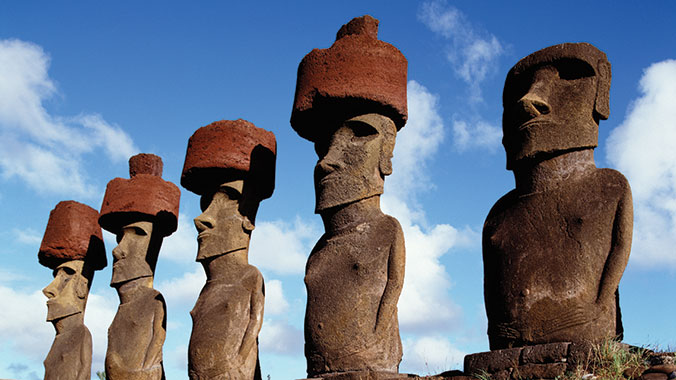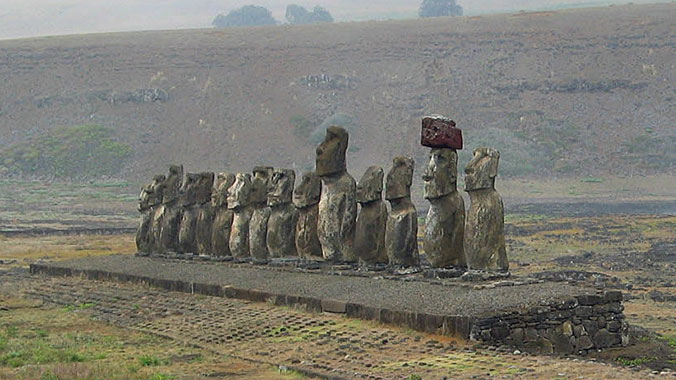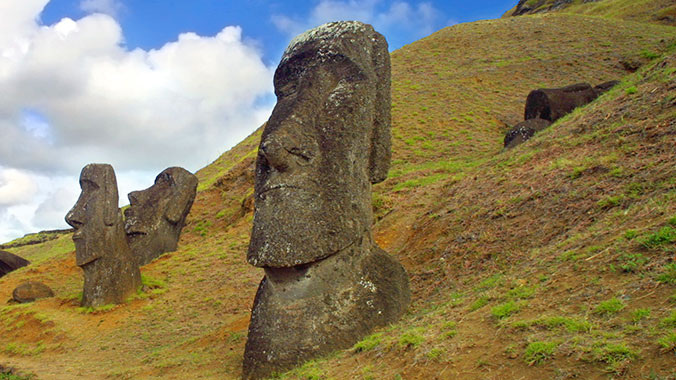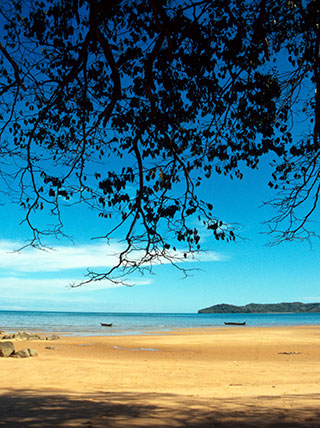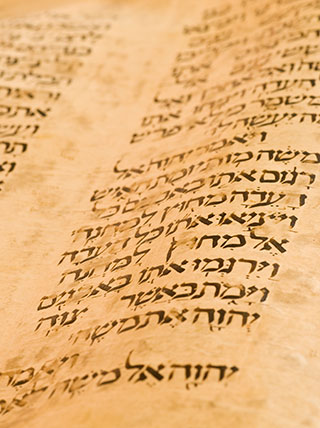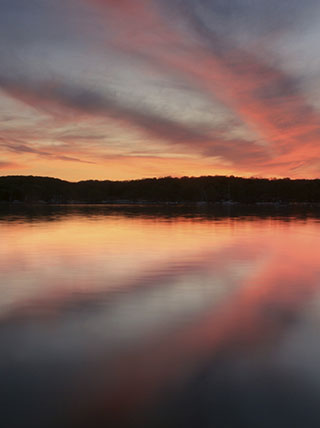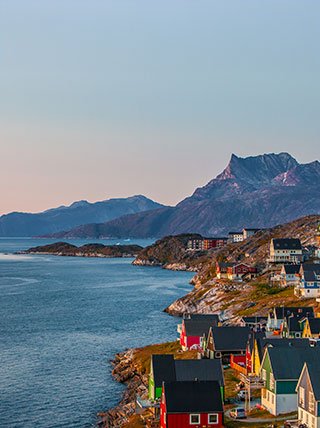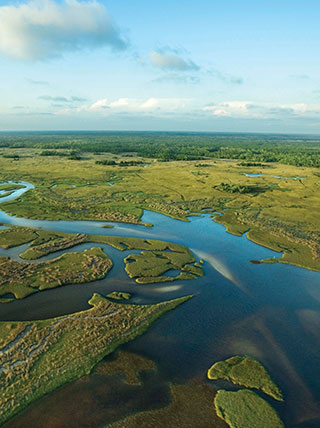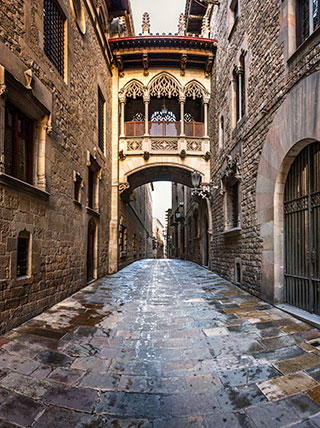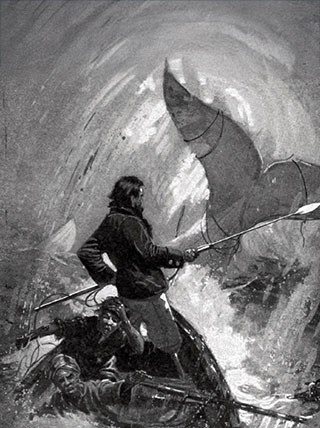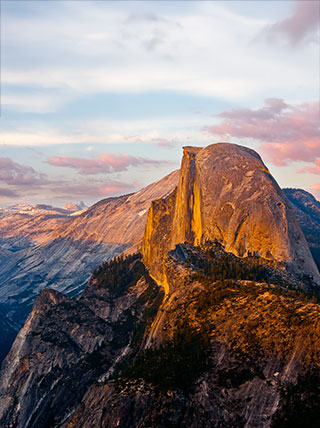Easter Island (Rapa Nui)
Easter Island: The Majesty and Mystery of Rapa Nui
Program No. 16342RJ
Alongside an archaeologist, dig into one of the world’s most enduring mysteries as you explore Easter Island and its ancient moai. Plus, share a traditional meal with a local family!
Enroll with Confidence
We want your Road Scholar learning adventure to be something to look forward to—not worry about. Learn more
Protecting the Environment
We offset a portion of the emissions created by your travel. Learn more
Itinerary
While we make every effort to ensure the accuracy of our published materials, programs are typically advertised more than a year prior to their start date.
Read More.
While we make every effort to ensure the accuracy of our published materials, programs are typically advertised more than a year prior to their start date. As a result, some program activities, schedules, accommodations, personnel, and other logistics occasionally change due to local conditions or circumstances. Should a major change occur, we will make every effort to alert you. For less significant changes, we will update you during orientation. Thank you for your understanding.
Duration
11 days
10 nights
What's Included
23 meals (
8B, 7L, 8D
)
3 expert-led lectures
9 expert-led field trips
2 flights during the program
1 performance
An experienced Group Leader
8 nights of accommodations
Taxes and customary gratuity
Road Scholar Assurance Plan
Day
1
In Transit to Program
Location:
In Flight
Activity Note
Hotel rooms reserved from 3:00 p.m. to guarantee early arrival tomorrow morning. Participants arriving to program early may check in this afternoon.
Evening:
Depart North America on overnight flights to Santiago, Chile. Refer to your personal air itinerary for specific flight information.
Day
2
Arrive Santiago, Orientation, Historic Santiago by Bus
Location:
Santiago
Meals:
L,D
Stay:
Hotel Plaza San Francisco
Activity Note
Hotel rooms have been reserved from the evening before to guarantee early check-in after flights land early-morning. Getting on/off a bus, multiple stops.
Morning:
Orientation: The Group Leader will greet everyone and lead introductions. We will review the up-to-date program schedule, discuss roles and responsibilities, logistics, safety guidelines, emergency procedures, and answer questions. Periods in the schedule designated as “Free time” and “At leisure” offer opportunities to do what you like and make your experience even more meaningful and memorable according to your personal preferences. The Group Leader will be happy to offer suggestions. Program activities, schedules, personnel, and indicated distances or times may change due to local circumstances/conditions. In the event of changes, we will alert you as quickly as possible. Thank you for your understanding.
Lunch:
At the hotel. Lunch — almuerzo — is typically the main meal of the day.
Afternoon:
We will board a bus and explore historic Santiago and surrounding neighborhoods with a local expert. We expect to make stops at the city's historic center, the Plaza de Armas; the Metropolitan Cathedral; the Pre-Columbian Art Museum; and the Presidential Palace. Moving on, we will reach Saint Christopher Hill with its iconic, 46-foot -high statue of the Virgin of the Immaculate Conception for great views of Santiago (weather and smog permitting). We will also drive through the neighborhoods of Providencia, Las Condes, and Vitacura to see some of the highlights.
Dinner:
At the hotel. Dinner — cena — is typically lighter than lunch/almuerzo.
Evening:
At leisure. Continue getting to know your fellow Road Scholars, settle in, and get a good night’s rest for the day ahead. Prepare for check-out and flight to Rapa Nui (Easter Island) in the morning.
Day
3
Fly to Rapa Nui (Easter Island), Free Time
Location:
Rapa Nui (Easter Island)
Meals:
B,L,D
Stay:
Hotel Otai
Activity Note
Getting on/off a bus. Early departure for transfer to airport. The non-stop flight from Santiago to Rapa Nui is approximately 5 hours. Local time in Easter Island is 2 hours behind mainland Chile.
Breakfast:
In the hotel lobby, we’ll have a “grab and go” breakfast.
Morning:
After checking out of the hotel, we will transfer via bus to Arturo Benítez Airport and board our non-stop flight to Rapa Nui (Easter Island); food is typically served during the flight. After a late morning arrival at Mataveri International Airport on Rapa Nui, we will transfer to our hotel and check in with some time to freshen up and relax before lunch.
Lunch:
At the hotel, we will have a light lunch.
Afternoon:
Free time. Take this opportunity for personal independent exploration to see and do what interests you most. Please refer to the list of Free Time Opportunities. The Group Leader will be happy to offer suggestions. If you’d like to see some of Hanga Roa town, the local post office across the street from the hotel will stamp your passport with a unique moai statues stamp free of charge. (The stamp does not have any legal implications; it's simply a nice memento of your time in Rapa Nui.) You could also take a short walk to the harbor to see your first moai, or just relax.
Dinner:
At the hotel.
Evening:
At leisure.
Day
4
Introduction to Rapa Nui, Englert Museum, Ahu Tahai
Location:
Rapa Nui (Easter Island)
Meals:
B,L,D
Stay:
Hotel Otai
Activity Note
Getting on/off a bus. Walking and standing during field trips; uneven terrain at Ahu Tahai.
Breakfast:
At the hotel.
Morning:
We’ll be joined at the hotel by a local expert who will give us a presentation on Rapa Nui, the indigenous name of Easter Island. The Rapanui people called it Te Pito O Te Henua, roughly translated as "Navel of the World." The island, covering only 66 square miles, is a speck in the ocean 2,500 miles from Chile and 2,000 miles from Tahiti. The greatest mystery is why and how the people made and moved nearly 900 gigantic figures — moai — some weighing more than 80 tons. Rapa Nui National Park that covers much of the island is a designated UNESCO World Heritage Site. From the UNESCO inscription: “A society of Polynesian origin that settled there c. A.D. 300 established a powerful, imaginative and original tradition of monumental sculpture and architecture, free from any external influence. From the 10th to the 16th century this society built shrines and erected enormous stone figures known as moai, which created an unrivalled cultural landscape that continues to fascinate people throughout the world.” The fact that Easter Island is the most remote inhabited island on earth makes these achievements even more astonishing. We’ll then board a bus for a field trip to the Padre Sebastian Englert Archaeological Museum, named for a Bavarian priest who came to the island in 1935 and spent his life studying Rapa Nui’s cultural, historical, linguistic, and archaeological heritage. Padre Englert left his collection of artifacts to Chile and many more have been discovered since. We will see some of the museum’s highlights including a moai eye made of white coral and red scoria (volcanic rock) as well as displays of local geology, flora and fauna; maps; illustrations of house types; and many other elements of Rapa Nui culture.
Lunch:
At the hotel.
Afternoon:
Next, we will head to Tahai to see and learn more about the world famous monolithic figures, the moai themselves. The fact that Easter Island is the most remote inhabited island on earth makes these achievements even more astonishing. There are three ceremonial platforms, called ahu, that support moai figures. The site and its figures were restored by an American anthropologist, William Mulloy, beginning in 1968. We will see two more ahu restored by Dr. Mulloy at Hanga Kio`e, a small bay just past town.
Dinner:
In the home of a Rapa Nui family, we’ll share a meal of favorite local dishes and dine as local people do.
Evening:
At leisure.
Day
5
Ahu Vaihu, Rano Raraku & Tongariki, Cultural Event
Location:
Rapa Nui (Easter Island)
Meals:
B,L,D
Stay:
Hotel Otai
Activity Note
Getting on/off a bus. Walking up/down moai quarry; stairs while climbing; uneven ground.
Breakfast:
At the hotel.
Morning:
We’ll set out for a field trip to the archaeological site of Ahu Vaihu. Constructed of finely crafted stones, Ahu Vaihu is located at the small bay of Hanga Te`e. The ahu has 11 toppled moai whose pukao (top knots) are lying where they fell, and a circle of rocks on the ground, used for Paina ceremonies to honor the dead. As we continue down the South Coast along the wind- and wave-carved shoreline, we will pass many collapsed ahu, toppled moai, and fallen stone fences to Rano Raraku, the volcanic crater that served as a quarry for carving moai.
Lunch:
In the National Park Picnic Area, we’ll have picnic-style boxed lunches.
Afternoon:
We will climb the mountainside path on Rano Raraku to view the quarry where the massive moai were carved out of hard basalt. Moai, in all stages of production, cover its southern flank. We’ll then move on to Tongariki, the largest ahu on the island. Demolished by a tsunami in 1960, it has been restored by Chilean archaeologist Claudio Cristino and Sergio Rapu, a scholar and former island governor, with the help of Japanese archaeologists, financial benefactors, and the Rapa Nui people. It once again supports its 15 moai.
Dinner:
At a local restaurant.
Evening:
A short walk from the restaurant, we’ll enjoy a Rapa Nui folkloric traditional dance, featuring island dancers accompanied by musicians playing traditional instruments.
Day
6
Class, Ahu Vinapu, Anakena, Ahu Nau Nau
Location:
Rapa Nui (Easter Island)
Meals:
B,L,D
Stay:
Hotel Otai
Activity Note
Getting on/off a bus. Walking and standing during field trip; uneven ground. Elective swimming at Anakena Beach.
Breakfast:
At the hotel.
Morning:
We’ll be joined by a local expert who will give us a presentation on the people of old and Rapa Nui ancient culture. Later in the morning, we’ll head out on a field trip to explore archaeological sites beginning at Ahu Vinapu. Because the stone construction here is unlike anything else in Polynesia and is similar to Inca stonework, it has raised questions about possible origins of the Rapa Nui people.
Lunch:
At Anakena Beach, we’ll have a barbecue lunch.
Afternoon:
Anakena, the largest beach in Rapa Nui, is a beautiful, sheltered, white sand beach surrounded by swaying palm trees, This is where Hotu Matu`a — the legendary first king-chief and settler — is said to have beached his canoe and lived in a cave while waiting for his boat-shaped house to be completed. You are welcome to take a swim in the ocean or stroll along the beach. We’ll walk up the hill to Ahu Nau Nau, a complex archaeological site where in 1978 Sergio Rapu, in reconstructing the ahu, first recognized that the coral fragments unearthed in the sand were the inlaid coral eyes of the moai. With this discovery and subsequent investigations of other moai came the realization that all Rapa Nui's moai, once they were placed on the ahu, had been given eyes. Next, we’ll pass the Poike Ditch where legend says the Long Ears and Short Ears had their famed battle. Long Ears and Short Ears are oral tradition names that more likely referred to people of tall and thin stature compared to those who were short and stocky. They had a difficult relationship, with the Long Ears considering themselves dominant and the Short Ears subservient — until the battle that changed everything.
Dinner:
At the hotel.
Evening:
At leisure.
Day
7
Free Time, Parque Nacional Rapa Nui, Rano Kao, Orongo
Location:
Rapa Nui (Easter Island)
Meals:
B,L,D
Stay:
Hotel Otai
Activity Note
Getting on/off a bus. Walking and standing during field trip; uneven terrain, climbing steps.
Breakfast:
At the hotel.
Morning:
Free time. Take this opportunity to see and do what interests you most. You might like to attend Sunday mass at the historic Rapa Nui Roman Catholic church, where hymns are sung in the Rapa Nui language. The hand-carved wooden statues and designs used on the vestments are wonderful examples of the use of culturally-related symbolism in liturgical art.
Lunch:
At the hotel.
Afternoon:
We will drive to Parque Nacional Rapa Nui. Located on the southwestern point of the triangle, the park provides spectacular views of the whole island. During our field trip, we’ll explore two great sights: the Rano Kao volcanic crater that surrounds a fresh water lake, and Orongo Ceremonial Village where, until 1853, the peculiar Birdman Festival was held in the spring of each year. The eruption of Rano Kao some 2.5 million years ago helped create the island. In another Rapa Nui mystery, cattail plants growing in the lake are the same species as those in the floating islands of Lake Titicaca in Peru. The Birdman competition involved tribal champions who had to swim to a small island off the coast, find an egg of the sooty tern — waiting as long as necessary until the birds arrived to lay — and bring it back unbroken. The winner’s tribe was awarded special privileges for a year. We’ll then head to Ana Kai Tangata, a seafront cave whose name can be translated as “place men eat” or “place where men are eaten.” Another mystery. The cave is known for its ancient paintings of sooty terns flying across the roof.
Dinner:
Dinner at a local restaurant.
Evening:
Returning to the hotel, the remainder of the evening is at leisure.
Day
8
Top Knot Quarry, Class, Free Time, Umikai Dinner
Location:
Rapa Nui (Easter Island)
Meals:
B,D
Stay:
Hotel Otai
Activity Note
Getting on/off a bus. Walking and standing during field trip; uneven terrain.
Breakfast:
At the hotel.
Morning:
We’ll set on a field trip to the inland sites of Ahu Huri a Urenga and Ahu Akivi, as well as Puna Pau, the small extinct volcano that served as a quarry for carving moai headdresses — or perhaps they were man-bun hairstyles! This will be our last opportunity to see moai and other remnants of Rapa Nui sculpture before departure. Returning to the hotel, we’ll gather for a wrap-up session and review the highlights of our program with a local expert.
Lunch:
On your own to enjoy what you like.
Afternoon:
Free time. See and do what interests you most and perhaps begin to think about packing.
Dinner:
At the hotel, we’ll enjoy a Rapa Nui umikai prepared in underground ovens. Share favorite experiences with new Road Scholar friends during our farewell dinner.
Evening:
At leisure. Prepare for check-out and departure tomorrow.
Day
9
Free Time, Fly to Santiago
Location:
Santiago
Meals:
B,L,D
Stay:
Hotel Diego de Almagro Providencia
Activity Note
Transfer via bus to the airport for the non-stop flight back to Santiago that takes approximately 5 hours; you will regain two hours. Food is typically served during the flight.
Breakfast:
At the hotel.
Morning:
Free time. You might like to see a bit more of Hanga Roa or simply relax. We will check out of the hotel and depart early afternoon to the airport and check in for the flight to Santiago, Chile.
Lunch:
In flight.
Dinner:
In flight.
Evening:
Arriving in Santiago, transfer to hotel and check in.
Day
10
Santiago, Program Concludes
Location:
In Flight
Meals:
B
Activity Note
Note: Getting on/off a bus. Walking and standing during field trip.
Breakfast:
At the hotel
Morning:
Free morning to explore the local area.
Lunch:
Lunch on your own.
Afternoon:
Transfer to Santiago airport (SCL) to catch return flights to the US or on-going flights to other destinations.
Evening:
This concludes our program. If you are returning home, safe travels. If you are staying on independently, have a wonderful time. If you are transferring to another Road Scholar program, detailed instructions are included in your Information Packet for that program. We hope you enjoy Road Scholar learning adventures and look forward to having you on rewarding programs in the future. Don’t forget to join our Facebook page and follow us on Instagram. Best wishes for all your journeys!
Day
11
In Transit From Program
Location:
In Flight
Please select a day to update the map
Map details are not available for this location.
Please Note:
This program has itinerary variations on certain dates.
Sep 27, 2025 - Oct 07, 2025
Sep 06, 2025 - Sep 16, 2025
Sep 27, 2025 - Oct 07, 2025
Nov 01, 2025 - Nov 11, 2025
Jan 10, 2026 - Jan 20, 2026
Jan 31, 2026 - Feb 12, 2026
Feb 21, 2026 - Mar 03, 2026
Mar 07, 2026 - Mar 17, 2026
Apr 04, 2026 - Apr 14, 2026
Sep 05, 2026 - Sep 15, 2026
Sep 26, 2026 - Oct 06, 2026
Oct 10, 2026 - Oct 20, 2026

